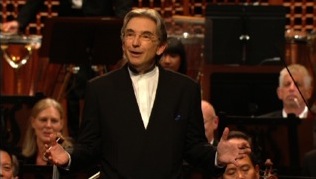 Play
Play
-
The third movement of Mahler”s Second Symphony, marked In ruhig fliessender bewegung (in quiet flowing movement), is simultaneously captivating and disturbing. Mahler described the movement this way: “If, at a distance, you watch a dance through a window, without being able to hear the music, then the turning and twisting movement of the couples seems senseless, because you are not catching the rhythm that is the key to it all. You must imagine that to one who has lost his identity and his happiness, the world looks like this — distorted and crazy, as if reflected in a concave mirror.”

Mahler also noted the folk influence in this movement: “The Bohemian music of my childhood home has found its way into many of my compositions. I’ve noticed it especially in the ‘Fischpredigt.’ The underlying national element there can be heard, in its most crude and basic form, in the tottling of the Bohemian pipers.”
